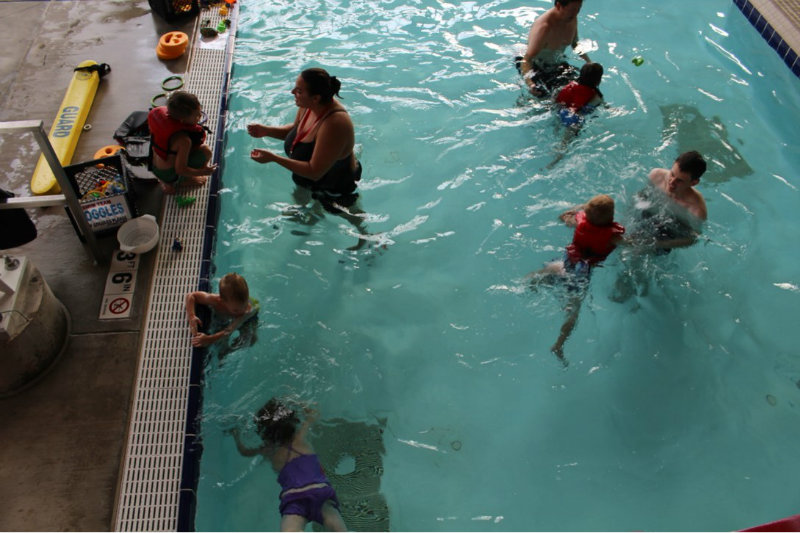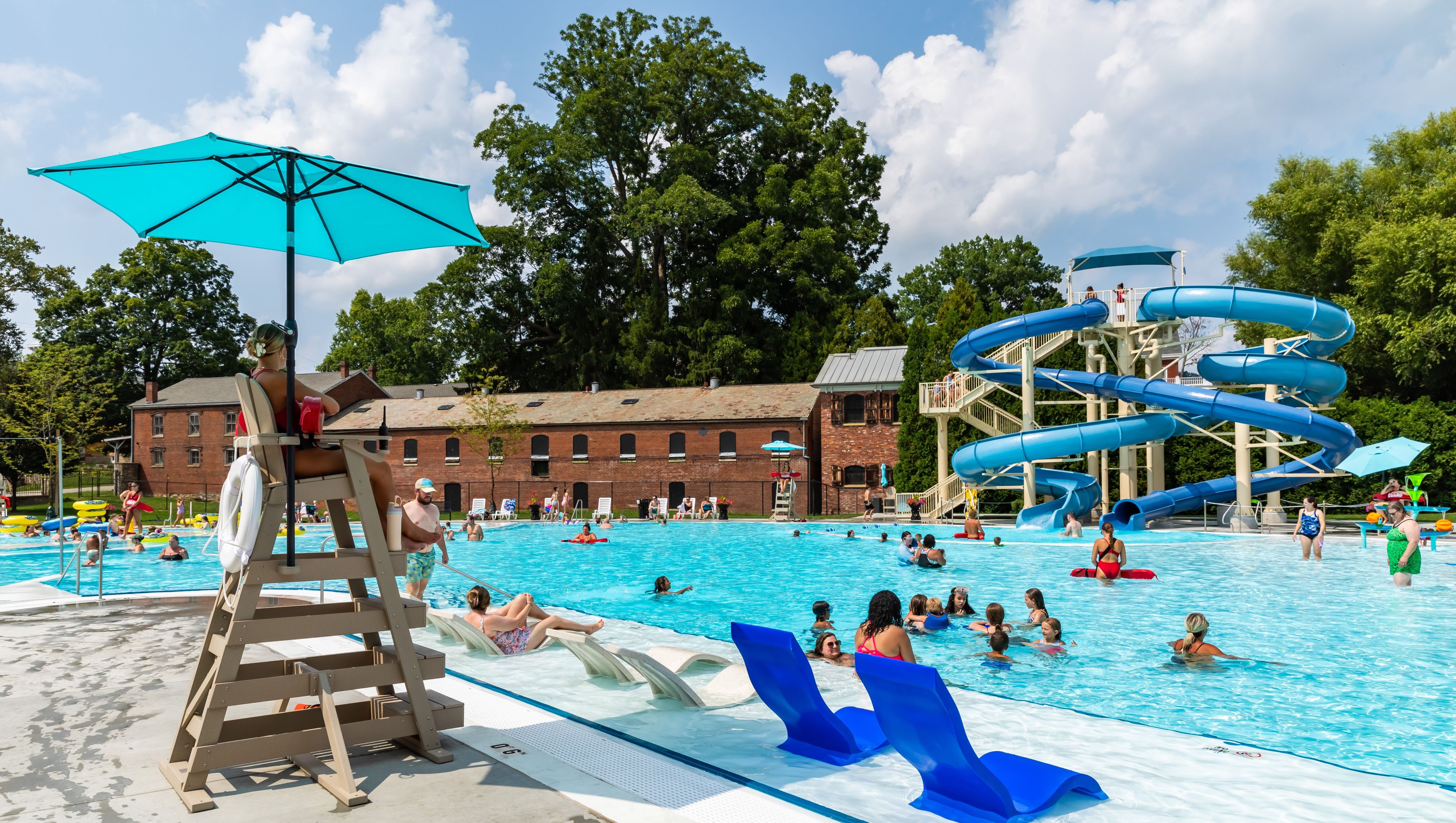During a typical 30-minute swim lesson, how many minutes of actual instruction does each student receive? By Josh Reusser’s estimation, approximately 3 to 5 minutes.
Consider how the average swim class is structured. Typically, you’ll find four to six children and one instructor. Hopefully, each student receives 5 minutes of individual instruction. But when you factor in the time it takes to corral them and tend to the occasional crier or panic-stricken student, it’s often less.
Students sit on the coping for most of the lesson. Reusser thought there had to be a better way.
“I started looking at ways I could almost reinvent swimming lessons and get kids actually moving in water,” says the aquatics program manager at Fairmont Aquatic Center in Salt Lake City, part of Salt Lake County Parks and Recreation.
His solution: Get parents involved. Or, more accurately, keep them involved. Moms and dads must participate in baby and toddler lessons, but when their children turn 3 or advance to a certain stage, parents can sit out the lessons.
But progress slows to a crawl when parents sit on the sidelines, Reusser says. Besides, moms and dads are almost always involved in any major life skill, from learning to read to riding a bike. Why should swimming be any different?
This summer, Reusser launched parent/child lessons, giving caretakers the option to join their kids in the pool. The result: Significantly more swim time for students
because parents are following the instructor’s directions, working their children directly. Students are no longer on standby.
Reusser also bakes in about 15 minutes between sessions so parents can continue practicing with their children immediately after the lesson.
“It reinforces what was taught, instead of three minutes of instruction and ‘Here’s what you need to work on for next time,’” Reusser says.
Seeing results
Not surprisingly, students participating in parent/child lessons learn faster than those in the conventional class.
Reusser has seen students with little to no water skills advance to swim teams over the course of a summer. This approach, he says, makes swim lessons more affordable. Parents won’t have to pay lessons year after year.
Now, Reusser says it’s just a matter of getting this message out to underserved communities: Become a good swimmer in less time and with less money.
Traditional lessons are still available. But a funny thing happened when Reusser introduced the parent/child program: Parents see other moms and dads in the pool and want to join in.
“It was actually hard with the traditional lessons to keep parents out sometimes,” Reusser says.



